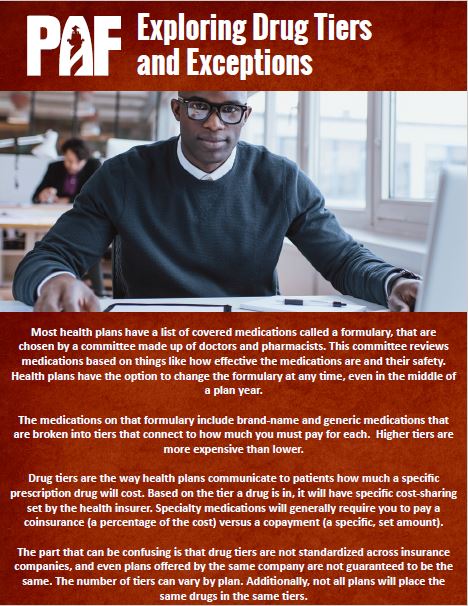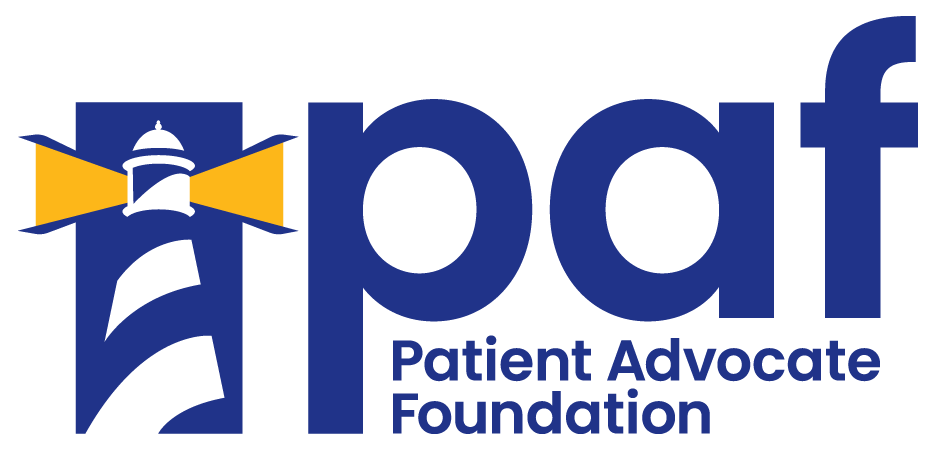Downloads

Exploring Drug Tiers and Exceptions
Drug tiers are the way health plans communicate to patients how much a specific prescription drug will cost.
 Menu
≡
╳
Menu
≡
╳
Patient Advocate Foundation (PAF) is a national 501 (c)(3) non-profit organization which provides case management services and financial aid to Americans with chronic, life threatening and debilitating illnesses.
In 2023, PAF served a population
of patients with over 958 distinct diagnoses.
Donate today and help Patient Advocate Foundation continue to help patients get access to the prescribed healthcare that they need.

Drug tiers are the way health plans communicate to patients how much a specific prescription drug will cost.